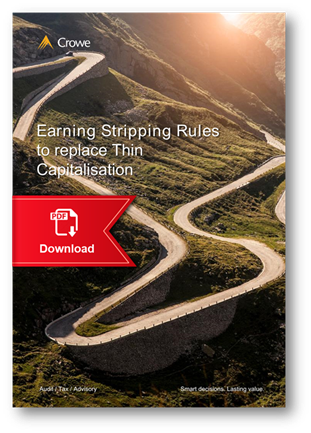
Earning Stripping Rules to Replace Thin Capitalisation

The deductibility of interest expenses for businesses in Malaysia is always not as straight forward as one has to meet the deductibility tests under Section 33(1)(a), Section 33(2) and Section 33(4) of the Income Tax Act 1967 (“ITA”). Pursuant to Section 33(1)(a), interest expenses are deductible if the money borrowed to which the interest related are being employed in the production of gross income or being laid out on assets used or held for the production of gross income of the person. For a person deriving business source, the deductibility rule is applicable only if the borrowed money is being solely employed for the production of business income. Where the borrowed money is employed otherwise than for production of business income (such as being deployed as a loan of money, or investment in shares and properties), the interest deducted is being restricted under Section 33(2). On top of that, Section 33(4) stipulates that where the interest expenses are not due to be paid in a period, the amount could only be deducted in the subsequent period when it is due to be paid.
In respect of money borrowed by a Malaysian company from a non-resident lender, the next obstacle is Section 39(1)(f). The provision under Section 39(1)(f) specifically disallows interest expenses where the payer fails to comply the withholding tax under Section 109 of the ITA.
Where the lender party and the borrower party are “associated person” within the meaning of Section 140A, the question of deductibility also involves whether the borrower’s borrowings (or financial assistance received) is excessive in relation to the fixed capital of such person. A company having a very small share capital but heavily financed by its associated person is known as “thinly capitalized”. There are lucrative tax benefits of a thinly capitalized company from both the lender’s and borrower’s perspectives. The borrower could obtain tax deduction on the interest paid to the lender. Continue reading >>>
